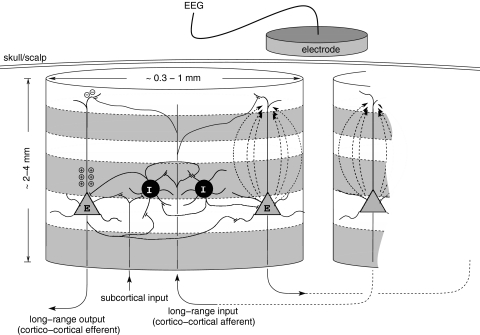Fig. 1.
Schematic representation of a cortical macrocolumn and the two major subtypes of neurons in mammalian cerebral cortex—excitatory (E) and inhibitory (I). Within a macrocolumn excitatory and inhibitory neurons are able to form all possible combinations of feed forward and feedback synaptic connectivity, whereas synaptic connections between cortical macrocolumns are exclusively excitatory. In human neocortex a cortical macrocolumn is estimated to contain of the order of 100,000–300,000 neurons (Nunez 1981). Electric field lines, drawn directed along the axis of the apical dendritic trees of the two excitatory neurons on the right, are the result of inward current flow due to excitatory synaptic activity in the distal portions of the apical dendritic tree, and make the greatest contribution to the surface recordable electrocorticogram (ECoG) and EEG. Diagram not draw to scale. Figure from Liley and Bojak (2005)

